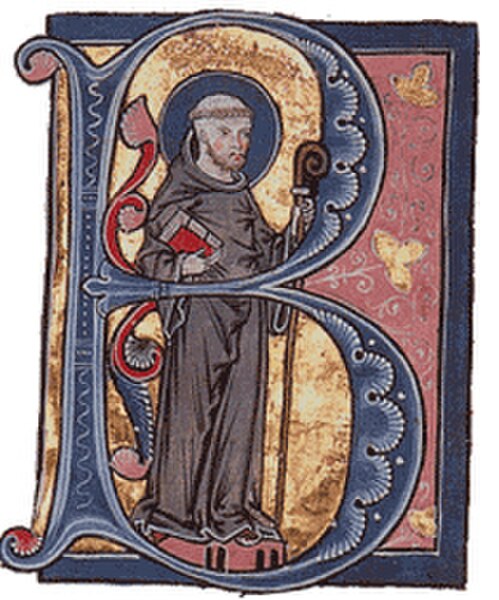Rievaulx Abbey was a Cistercian abbey in Rievaulx, near Helmsley, in the North York Moors National Park, North Yorkshire, England. It was one of the great abbeys in England until it was seized in 1538 under Henry VIII during the Dissolution of the Monasteries. The wider site was awarded Scheduled Ancient Monument status in 1915 and the abbey was brought into the care of the then Ministry of Works in 1917. The ruins of its main buildings are today a tourist attraction, owned and maintained by English Heritage.
Rievaulx Abbey
Rievaulx Abbey
Rievaulx Abbey viewed from Rievaulx Terrace (NT)
Rievaulx Abbey
The Cistercians, officially the Order of Cistercians, are a Catholic religious order of monks and nuns that branched off from the Benedictines and follow the Rule of Saint Benedict, as well as the contributions of the highly-influential Bernard of Clairvaux, known as the Latin Rule. They are also known as Bernardines, after Saint Bernard himself, or as White Monks, in reference to the colour of the "cuculla" or cowl worn by the Cistercians over their habits, as opposed to the black cowl worn by Benedictines.
St. Bernard of Clairvaux, one of the most influential early Cistercians, seen here depicted in a historiated initial
An illumination of Stephen Harding (right) presenting a model of his church to the Blessed Virgin Mary (Municipal Library, Dijon). Cîteaux, c. 1125. At this period Cistercian illumination was the most advanced in France, but within 25 years it was abandoned altogether under the influence of Bernard of Clairvaux.
Tintern Abbey, founded in 1131
The ruins of Melrose Abbey, mother house of the Cistercians in Scotland








